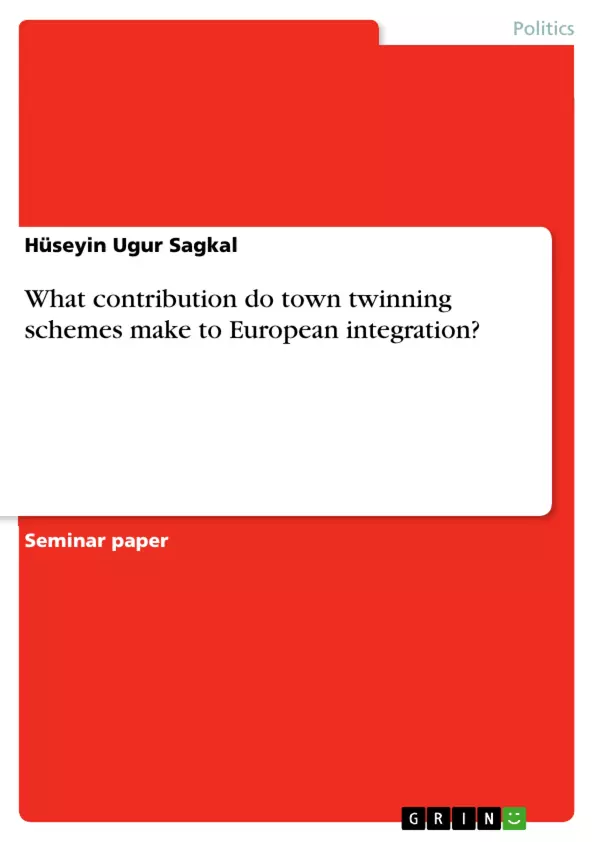"The current international system still focuses largely on the nation-state level and often does not recognize the independent role of cities, but only considers them "stakeholders." Increasingly, however, cities are acting alone or in associations as independent actors in international relations. This German government's guideline on international cooperation for sustainable urbanization "Partners in a World of Cities" illustrates that cities (municipalities) are becoming increasingly important. According to the CEMR database, there are approximately 38,000 town twinning arrangements within Europe. Despite the high quantitative weight and the resulting frequent contact with town twinning, the function of town twinning concerning European integration remained open within European research.
The present study is therefore intended to illuminate town twinning from the perspective of European integration.
Inhaltsverzeichnis (Table of Contents)
- Introduction
- Current State of Research
- Central Definitions
- Consideration of town twinning in theoretical approaches
- The municipal level as a factor in the integration process
- Town twinning in Europe and the CEMR
- Development of town twinning....
- Conclusion
Zielsetzung und Themenschwerpunkte (Objectives and Key Themes)
This study explores the contribution of town twinning schemes to European integration. It focuses on town twinning with municipalities abroad, examining its role in strengthening municipalities and fostering democratic freedoms within the context of European integration.
- The role of municipalities in European integration
- Town twinning as a tool for fostering international cooperation
- The historical development of town twinning in Europe
- The theoretical underpinnings of town twinning
- The impact of town twinning on the European integration process
Zusammenfassung der Kapitel (Chapter Summaries)
- Introduction: This chapter introduces the research question and the significance of town twinning in the context of European integration. It highlights the growing importance of municipalities in international relations and outlines the scope of the study.
- Current State of Research: This chapter reviews existing research on town twinning, highlighting its limited focus and the lack of comprehensive data. It identifies key authors and studies that have explored the topic, emphasizing the need for further research.
- Central Definitions: This chapter defines the concept of town twinning, drawing on various sources including academic literature, municipal associations, and the Council of European Municipalities and Regions (CEMR). It clarifies the key characteristics of town twinning, differentiating it from other forms of international cooperation.
Schlüsselwörter (Keywords)
Town twinning, European integration, municipalities, international cooperation, democratic freedoms, CEMR, neo-federalism, functionalism, neo-functionalism, systems theory.
- Citar trabajo
- Hüseyin Ugur Sagkal (Autor), 2020, What contribution do town twinning schemes make to European integration?, Múnich, GRIN Verlag, https://www.grin.com/document/956793



